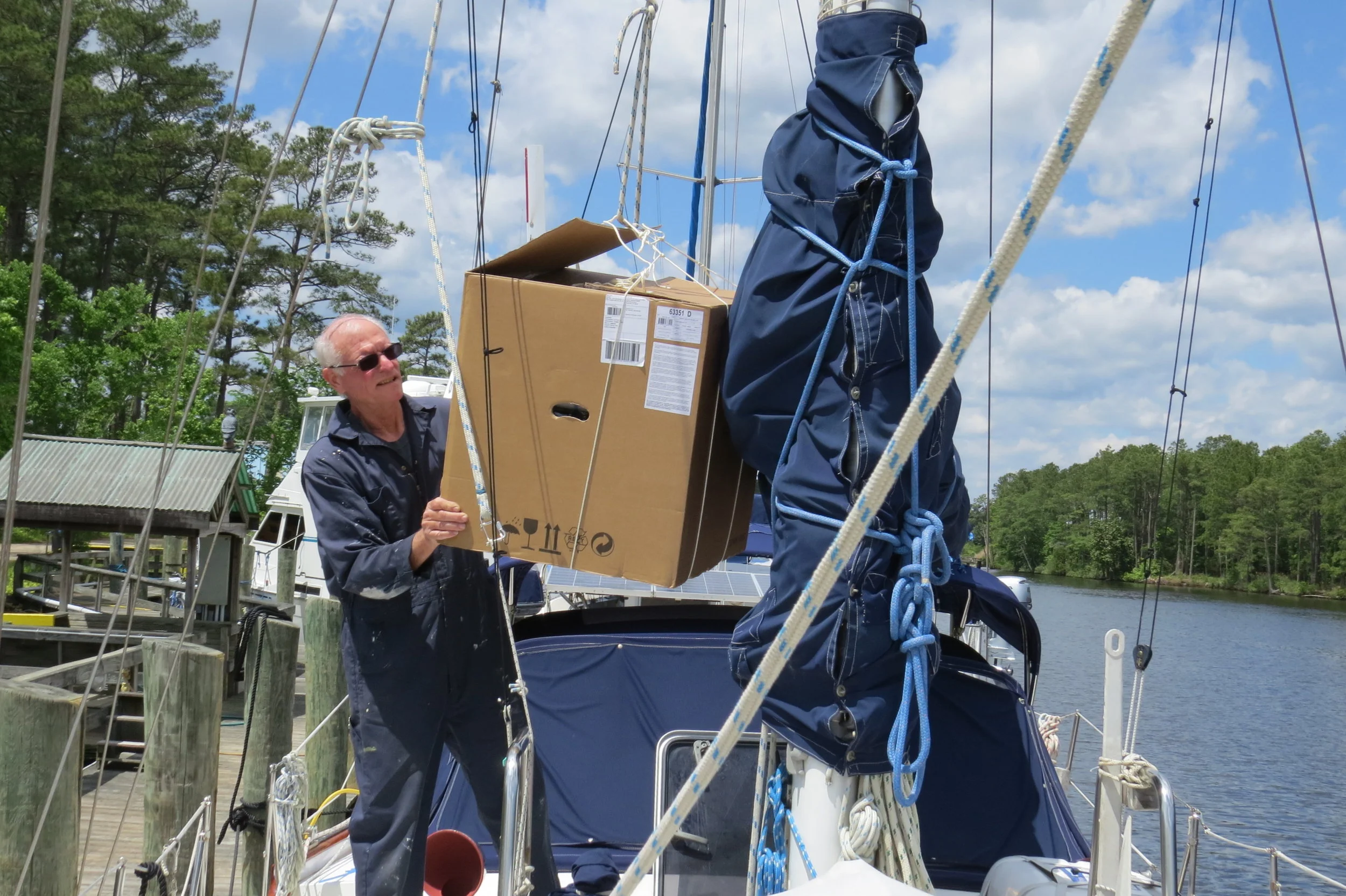Our Force 10 propane galley stove is the original that was installed when Nine of Cups was new – which means it is now almost 29 years old. That's ancient in terms of boat gear. We think we are dong pretty well if something lasts 10 years.

That's not to say it hasn't needed repairs on occasion. The gimbals, those steel studs on each side of the stove that allow it to keep the cooking surface level as the boat rolls or is on a heel, have worked loose from time to time. When that happens, I have to remove the front panel that holds the burner knobs, and reach way inside to replace the bolt that holds each gimbal in place. I found that if I use a cap screw with a socket head and an allen wrench, I can get the bolt in place and tightened without too much difficulty. The gimbals do wear out as well – we had new ones machined in Ecuador a few years ago.

The 'sparker', the device that provides the spark at each burner when lighting the stove, gave it up about a decade ago. I didn't replace it for a couple of reasons: first, because it is quite easy to light a burner using a fireplace lighter, and second, because we store pans in the oven. The U.S. Coast Guard frowns on storing things in the oven, as it is too easy to light the oven with a sparker, forgetting about the things that reside there. Since we have to open the oven to light it, I'd have to be pretty preoccupied to overlook the pans sitting there and melting them or worse. I'm not sure this argument will get us off the hook if we are ever boarded and inspected by the coast guard, but I'm game to argue the point.
Another frequent problem we have is with carbon build-up in the burner jets. Under each burner is a small jet with a precision orifice. Over time, the orifice slowly clogs up with carbon, and the flame gets progressively smaller. When we start having problems getting the oven up to temperature or when it takes forever to heat our morning cuppas, I know it is time to clear out the carbon.
It is quite easy to ream out the carbon build-up. On our Force 10 stove, each burner has a cap that acts as a flame disperser and which lifts off the burner. Once the flame disperser is removed, the jet can be seen below. I usually light the flame without the disperser – it will be 2”-4” (50mm-75mm) when there is a moderate amount of carbon.

I use an .032” (0.813mm) drill bit mounted in a Dremel tool to ream the jet. I don't actually plug the Dremel in and turn it on, but use the Dremel tool only as a holder for the bit. I carefully insert the drill bit into the jet and slowly rotate the bit, gradually reaming the orifice. The drill bit will, after a few minutes, break through all the carbon. Then I carefully withdraw the bit. It is quite tiny, and the project is going to take a lot longer if the bit breaks off in the jet.


The most used burners will have the most carbon, but as long as the tools are out, it only makes sense to ream all the burners. When I'm all finished, I light each flame before replacing the dispersers. The flame heights will now be 10”-12” (25cm-30cm) or more – watch your eyebrows.









